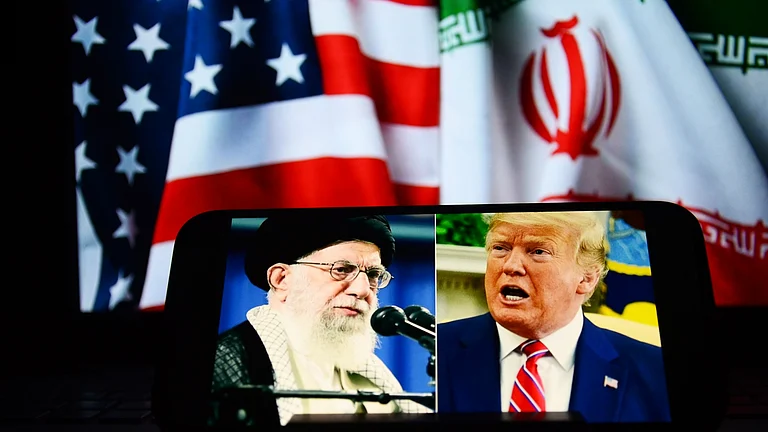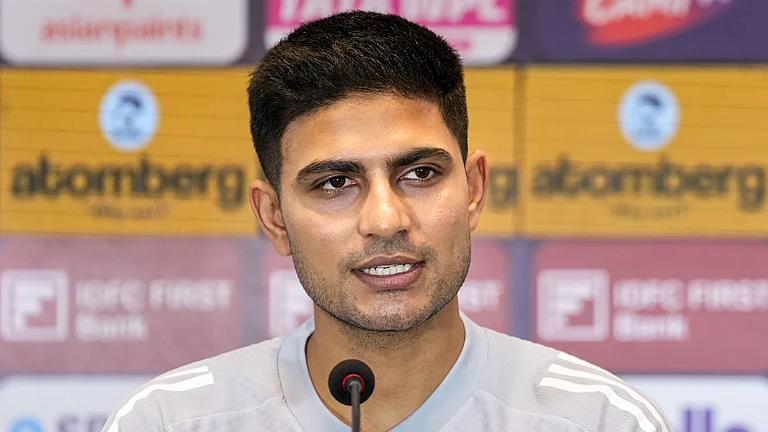In the Darjeeling and Kalimpong hills of West Bengal, stickers and posters demanding the release of the 11th Panchen Lama from alleged forced confinement by the Chinese authorities can be spotted in many of the shops owned by the Tibetan refugee population. The Panchen Lama is considered the second-highest spiritual leader of Tibetan Buddhists, after the Dalai Lama, and has been one of the contentious issues of China and the Dalai Lama’s battle over Tibet and Tibetan Buddhism.
Such posters put up by Rohingya Muslim refugees condemning violence by Myanmar’s military junta rulers and the Buddhist majoritarians in that country are not even faintly imaginable anywhere in India.
In India—one of the highest global intakers of refugee populations—all refugees are not equal. In August 2022, Urban Development and Housing Minister Hardeep Singh Puri had to learn this truth the hard way. He wrote in a tweet, “India has always welcomed those who have sought refuge in the country. In a landmark decision, all #Rohingya #Refugees will be shifted to EWS flats in Bakkarwala area of Delhi. They will be provided basic amenities, UNHCR IDs & round-the-clock @DelhiPolice protection.”
The drubbing came within hours. Amidst panicked phone calls from a section of West Bengal and Assam BJP leaders to their Delhi bosses, inquiring if the party’s policy suddenly changed, the home ministry issued a statement, clarifying that it did not give any direction to provide EWS (economically weaker section) flats to “Rohingya illegal migrants.”
The home ministry had already taken up the matter of deportation of illegal foreigners with the country concerned through the Ministry of External Affairs, the statement said, adding that they were to be kept in detention centres till deportation. “The Government of Delhi has not declared the present location as a Detention Centre. They have been directed to do the same immediately,” the statement said.
Mind the wording. Puri described them as refugees but the MHA as illegal migrants. India does not consider Rohingyas as refugees, even though there were 21,591 Rohingya ‘refugees and asylum seekers’ in India, as of December 2022, according to the United Nations High Commissioner for Refugees (UNHCR).
Tibetan Buddhists are among India’s most privileged refugees. They have, in many cases, almost become Indians. As of 2009, 1.1 lakh Tibetan refugees lived in 45 settlements spread across 10 states but many also lived outside these settlements. They do not face prohibitions in movement or income opportunities, unlike Tamil refugees from Sri Lanka, who live mostly in camps, or worse, the Rohingyas, who end up in detention centres.
For example, in 2014, the Union government asked all states to ensure giving 20-year lease documents for land occupied by Tibetan refugees, in which the Central Tibetan Relief Committee (CTRC) would sign on behalf of the occupier. It even said that the CTRC should be allowed to determine which portion of the land can be used for residential, agricultural, economic or religious activities, “or any such activity so that the Tibetan families can follow their culture and religion unhindered and yet be able to make an economic living out of the land.”
The circular said that the government of India “categorically wishes to clarify that the benefits of various government of India schemes may be extended to the Tibetan refugees, including MGNREGA, public distribution system, housing schemes, National Rural Livelihood Mission, National Rural Health Mission and loan facilities from public sector banks.”
The Tibetan presence in India certainly gives the country an advantage in dealing with China, the superpower neighbour, and India takes visible initiatives to make the Tibetan Buddhists feel at home. In contrast, BJP leaders of various ranks have described Muslim refugees from Bangladesh and Myanmar as ‘termites’ who are eating into resources meant for Indians and destabilising society wherever they are settling down.
Hindus who came from western Punjab and eastern Bengal, not only during the Partition but also over the following decades, had different experiences based on where they settled. In West Bengal, the eastern Bengal (initially East Pakistan and later Bangladesh) Hindus got somewhat smoothly integrated into the existing society, largely with political help, mostly from the Left parties. This turned West Bengal’s refugee-dominated areas into the Left’s bastions. Most of these people subsequently managed to enlist themselves as Indians and got the necessary identity documents. The same has allegedly happened with a section of Muslims who too migrated from eastern Bengal.
But in Assam, Tripura, and Meghalaya in the northeast, the steady inflow of Bengali Hindus and Muslims causing demographic changes led to ethnic conflicts and violence of varying magnitude, resulting in political turmoil.
According to Sabyasachi Basu Ray Chaudhury, a professor of political science at Rabindra Bharati University in Kolkata who has done extensive research work on migration and refugee issues, the absence of any standardised policy to treat refugees allows India to not only to deal with the situation as per its own advantage but also leaves scope for differential treatment and the use of refugees as strategic pawns, both in domestic and international scenarios.
He cites the case of the tribal-Buddhist Chakma refugees from Bangladesh, who came in during the late 1980s and the early 1990s.
“The Chakmas were allowed to settle in Tripura and the Indian government even lent some support towards their cause and their insurgent organisation Shanti Bahini, when India’s relations with Bangladesh were a little tense during Hussain Muhammad Ershad and Khaleda Zia’s rule. Bangladesh was giving shelter to northeast Indian insurgents at that time. But the Chakmas were forced to return after Sheikh Hasina’s friendly government took charge in 1996,” he says.
He also points out that Bengali Hindu refugees from East Pakistan (later Bangladesh) found some social acceptance in West Bengal, as did the Sri Lankan Tamil refugees who started coming to Tamil Nadu in the 1980s. India did not push any Bengali Hindus out of West Bengal but many Tamil refugees were subsequently forced to return after stabilisation of the situation in Sri Lanka. “Even the Citizenship Amendment Act (CAA) of 2019 does not mention refugees from Sri Lanka,” he says.
According to him, there was no global standard or policy on refugee issues when one of the world’s greatest exodus started in 1946 around India’s Partition and continued for a decade. The UNHCR was yet to come into existence and even the 1951 global convention on refugees had spatio-temporal limitations, as it remained mostly Euro-centric, concerning World War II.
“Afterwards, global refugee policies started getting shaped by the UNHCR protocol of 1967 and regional conventions like the 1969 Organization of African Unity (OAU) Refugee Convention or the 1984 Cartagena Declaration in America. Nevertheless, India continued without any formal refugee policy and did not ratify the UN protocol, which is one of the reasons its neighbours did not ratify it either,” says Basu Ray Chaudhury.
The lack of a formal policy also allows different states to have their preference on the question of refugee intake. One of the newest lot of refugees is the Chin-Kuki-Mizo tribal Christians from Myanmar, who too are fleeing their homeland in the face of conflict with Myanmar’s military junta rulers. They have found a rather warm welcome in the northeastern state of Mizoram, where the majority of the people share an ethnic bond with them. But in its neighbouring state of Manipur, the same alleged infiltration of Kuki-Chin-Mizo people has led to the build-up of ethnic tension that eventually contributed to the triggering and escalation of the uncontrollable ethnic riots that have claimed more than 140 lives in two months and thrown Manipur in a state of chaos. According to UNHCR, 53,500 people from Chin and Sagaing states have entered India since the February 2021 military coup in Myanmar, of whom over 40,000 are living in Mizoram and over 8,000 in Manipur.
Here, too, the Mizoram chief minister Pu Zoramthanga refers to the migrants as refugees, while the Manipur chief minister N Biren Singh refers to them as ‘illegal migrants.’
This scope for differential treatment got formalised in the shape of the CAA, which specifically mentions whom it wants to accept as refugees— Hindu, Sikh, Buddhist, Jain, Parsi or Christian communities from Afghanistan, Bangladesh or Pakistan, who entered into India on or before December 31, 2014.
In essence, this mentions only the minority communities from neighbouring Islamic countries. It excludes minorities from Buddhist-majority Myanmar, a neighbour which is going through a civil war-like situation for several years now, and another Buddhist-majority neighbour, Sri Lanka.
The BJP leaders argued that the minority population from these Islamic countries were forced to migrate in the face of majoritarian onslaught but Muslims from these countries came seeking economic benefits. The first group of people can be sympathised with and supported, while the second group of people are to be weeded out.
In a 2019 article published in the Forced Migration Review, refugee rights activist, lawyer and researcher Amaya Valcárcel Silvela wrote that more than 62,000 Tamil refugees lived in 107 camps spread throughout Tamil Nadu, and just under 37,000 refugees lived outside the camps.
“Although refugees are entitled to residence visas and work permits, prolonged life in the camps does not lead to resilience and empowerment, and these refugees consider themselves in limbo, belonging neither to Sri Lanka nor to India and unable to get on with their lives,” she wrote.
Even though the UNHCR facilitated the return of several thousand refugees, Silvela pointed out that the returning refugees, particularly those who fled the atrocities towards the end of the civil war in 2009, have expressed fear for their safety, including fear of being seen as having connections to the Liberation Tigers of Tamil Eelam (LTTE). But the CAA makes it clear that the current government in India does not want to give them citizenship. They may take their time here, living a refugee life, but should not expect to become citizens.
Rohingyas suffer from even greater fear with the very prospect of return—they undertook great difficulties to escape alive in the first place. Rohingyas continue to be globally treated as one of the most-persecuted minority communities in the world but to India’s current ruling dispensation, letting them stay would increase the country’s Muslim population share, which the BJP and its ideological parent, the Rashtriya Swayamsevak Sangh (RSS), clearly does not want.
Bangladeshi Muslims will meet the same fate, as Assam chief minister Himanta Biswa Sarma and a number of West Bengal’s senior BJP leaders have repeatedly threatened.
In both these states, the issue of migration impacting demographics has turned into a major political issue. In Assam, Bengali migration has been at the centre of state politics since the 1980s, while in West Bengal, the alleged migration of Muslims has been turned into a political issue after the rise of the BJP in 2014.
It is largely to assure Bengali Hindu refugees—arguably the most numerous of all refugees in India who are estimated to number in the millions—that the CAA was planned. Even if they have gaps in their citizenship status, those will be blocked, and their citizenship will be formalised by the CAA. The same promise has sparked off tension in Assam, Meghalaya and Mizoram, where protests erupted against the CAA. Mizoram, which has been welcoming the Kuki-Chin refugees, is strongly opposed to formalising the residential status of Bengali migrants. This has made it difficult for the Union government to implement the CAA. One of the first steps has to be the framing of ‘Rules’, which the government has been postponing. This may have its implications in West Bengal, where the BJP swept the eastern Bengali-dominated districts in the 2019 Lok Sabha election and the 2021 Assembly election by promising to formalise their citizenship.
While West Bengal Chief Minister Mamata Banerjee repeatedly said that Bengali migrants did not need CAA because all of them have already got their citizenship records, including names on voter lists and PAN and Aadhaar cards (by whichever means they managed to do this), the BJP said this is untrue.
“If the Hindu refugees really have no issues with their citizenship status, then why are they suffering when the police or intelligence officers ask for pre-1971 documents at the time of police verification before getting a government job or passport?” asks Jagannath Sarkar, BJP MP from Ranaghat Lok Sabha constituency, an area dominated by eastern Bengal Hindu migrants. However, with Manipur already burning over the conflict between the majority Metei community and the Kuki-Chin tribes, trouble breaking out in other northeastern states over the CAA might be the last thing the Modi government would want.
Sarkar, nevertheless, is confident that the Hindu refugee votes will stay with them even if the Centre fails to frame the CAA rules before the 2024 Lok Sabha election. “The people know that only the BJP wants to implement the CAA and that it is because of the opposition forces that it could not be implemented. These opposition parties fomented trouble and Bengal will see similar violence by illegal migrants (read Muslims) against the CAA’s implementation if the opposition forces, the TMC, the Left and the Congress, are not weakened,” he says, indicating their line of campaign for the 2024 elections in Bengal’s Hindu refugee dominated areas.
(This appeared in the print as 'All Are Not Equal')


























